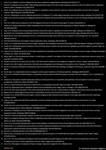Learning objectives
To illustrate various focal hepatic lesions that may show hyperintensity on hepatobiliary phase (HBP) MRI in healthy, cirrhotic and oncologic patients.
Background
Hepatobiliary contrast agents – i.e. gadobenate dimeglumine and gadoxetic acid – have improved the diagnostic accuracy of MRI for the diagnosis of focal liver lesions [1-6]. The vast majority of focal liver lesions are hypointense on HBP. Less commonly hepatic lesions may appear totally or partially hyperintense on HBP based on increased uptake of hepatobiliary contrast agent through organic anion-transporting polypeptide (OATP) 1B3, delayed enhancement due to retained contrast material in fibrotic stroma or peritumoral hyperintensity due to peritumoral hyperplasia with increased glutamine synthetase or...
Findings and procedure details
1. Healthy liver
1a. Focal nodular hyperplasia (fig.1)
FNH usually occurs in relatively young women [10]. FNH is defined as a nodule composed of benign-appearing hepatocytes occurring in a liver that is otherwise histologically normal or nearly normal [11]. As reported by Grazioli et al [12], 91% of FNHs show iso- or hyperintensity on the HBP likely related to the equal or stronger OATP1B3 expression compared to background liver [13, 14] due to the activation of glutamine synthetase which is one of the major downstream...
Conclusion
Benign and malignant hepatic masses may appear totally or partially hyperintense on HBP. Knowledge of clinical setting, pathological correlation and remaining imaging features is of utmost importance for adequate differential diagnosis.
Personal information and conflict of interest
D. S. Gagliano; Villabate/IT - nothing to disclose G. Porrello; Palermo/IT - nothing to disclose F. Vernuccio; Palermo/IT - nothing to disclose R. Cannella; Palermo/IT - nothing to disclose G. Brancatelli; Palermo/IT - nothing to disclose M. Midiri; Palermo/IT - nothing to disclose
References
1.Fowler KJ et al. Hepatology. 2011;54(6):2227-37.
2.Bieze M et al. Am J Roentgenol. 2012;199(1):26-34.
3.Rimola J et al. Abdom Radiol (NY). 2019;44(2):549-558.
4.Lee YJ et al. Radiology. 2015;275(1):97-109.
5.Bastati N et al. Radiology. 2020;294(1):98-107.
6.Neri E et al. Eur Radiol. 2016;26(4):921-31.
7.Yoneda N et al. Radiographics. 2016;36(7):2010-2027.
8.Kang Y et al. Radiology. 2012;264(3):751-60.
9.Ba-Ssalamah A et al. Radiology. 2015;277(1):104-13.
10. Nguyen BN et al. Am J Surg Pathol. 1999;23(12):1441-54.
11. International Working Party. Hepatology. 1995;22(3):983-93.
12. Grazioli L et al. Radiology. 2012;262(2):520-9.
13. Yoneda N...





